It’s truly amazing to see how fast artificial intelligence (AI) has evolved and transformed various industries, including the nonprofit sector.
As a nonprofit professional, you’ll be thrilled to know that AI is your new secret weapon for elevating your operations, fundraising, and outreach efforts. Say goodbye to tedious tasks and hello to what really matters – making a positive impact for the communities you serve.
Ready to learn how practical AI tools can make your life easier? In this article, we’ll dive into how you can leverage the power of AI to take your nonprofit game to the next level.
Potential Benefits of Artificial Intelligence for Nonprofits
Artificial intelligence offers several advantages for nonprofits and the best part is that you don’t need to be a developer to reap these benefits in your work:
1. Improved Operational Efficiency
Improved operational efficiency is one of the biggest advantages of using AI. AI-powered tools can make your workflows more efficient. It can also save your staff from time-consuming tasks, so they can focus on more important work.
2. Better Donor Engagement
Meanwhile, another benefit of artificial intelligence for nonprofits is the ability to analyze donor behavior and predict future actions. By using this information, you can personalize your outreach efforts and provide tailored experiences to your donors. For example, this could include personalizing email campaigns or making targeted recommendations based on their giving history.
3. Enhanced Data Analysis
AI can also analyze data more quickly and effectively. Your organization probably generates and collects a lot of data, and AI-powered data analytics tools can help you gain insights into donor behavior, program outcomes, and other key metrics. In turn, these insights can guide your decision making on how to better allocate resources and prioritize your efforts.
Examples of Beneficial Artificial Intelligence Technology for Nonprofits
In this section, we will explore some examples of artificial intelligence tools for nonprofits you can use to augment your work.
Chatbot AI Tools
AI-powered chatbots are transforming the way nonprofits engage with their audience. You’ve probably noticed them more and more lately. Pretty soon, they’ll be a common feature on every website.
At the most basic level, a chatbot is a computer program that uses artificial intelligence to answer customer questions. These bots provide personalized support by simulating human conversation. With preconfigured responses, they’re great for frequently asked questions such as “How do I donate to your organization?” or “How can I get involved?”.
There’s a ton of chatbot options out there. Here are a few easy-to-use ones that don’t require a single line of code:
1. Tars
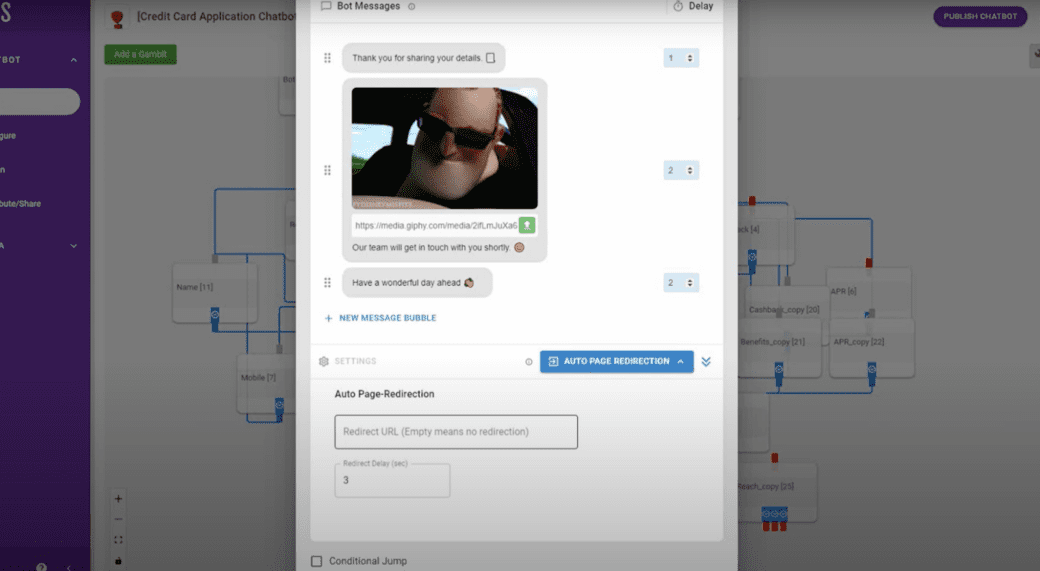
First on our list is Tars, a conversational AI platform that helps scale interactions between nonprofits and customers with conversational automation.
Functionality: Some key features include customizable templates, integrations, analytics and reporting, and multilingual support.
Pricing: Tars offers a 14-day free trial but ongoing use of the platform requires a paid subscription.
2. ManyChat
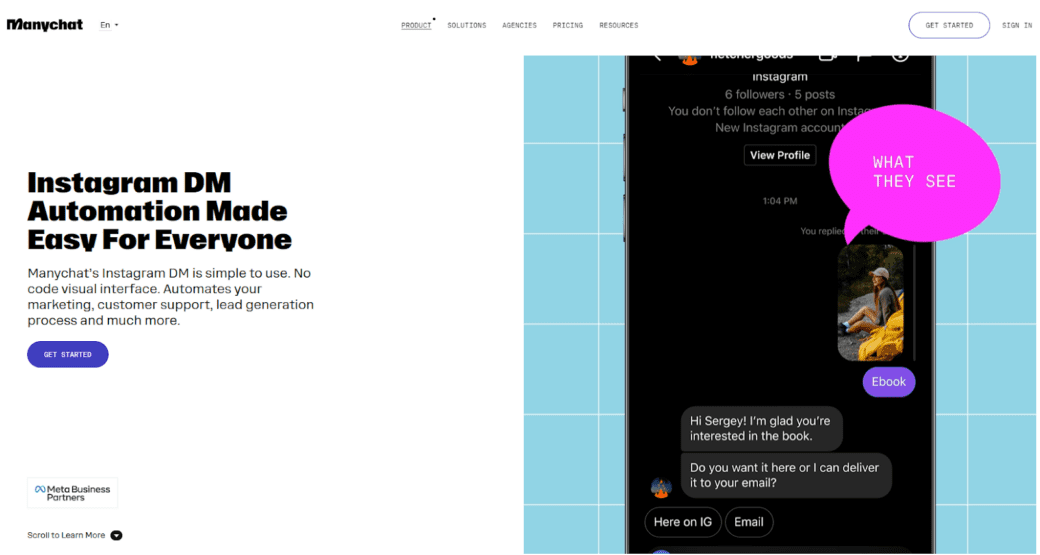
Another excellent platform to engage and keep your customers happy is ManyChat.
Functionality: Touting a user-friendly interface, ManyChat offers pre-built templates and automation tools to deliver instant support through personalized conversations in Instagram DMs, WhatsApp, and Facebook Messenger. It also seamlessly integrates with popular third-party tools like Zapier and Shopify.
Pricing: To unlock more advanced features, you’ll need to upgrade to ManyChat’s paid plan, but you can start using it for free.
3. Dialogflow by Google
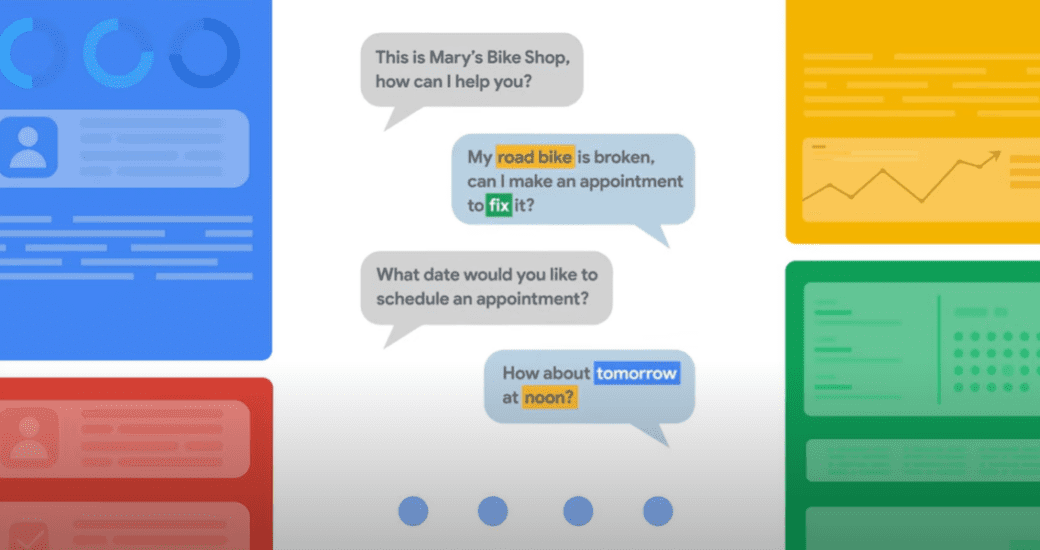
Need another chatbot contender? Consider Dialogflow by Google.
Functionality: It’s a natural language processing (NLP) platform that comes with an easy-to-use interface and drag-and-drop functionality. You can choose from pre-built templates or customize your chatbot’s functionality with the help of their extensive documentation and resources.
Pricing: Although Dialogflow is priced monthly, you can try it out for free with a $600 credit if you’re a new customer. Plus, if it’s not your cup of tea, you can cancel the trial anytime.
A Different Kind of Chatbot: ChatGPT
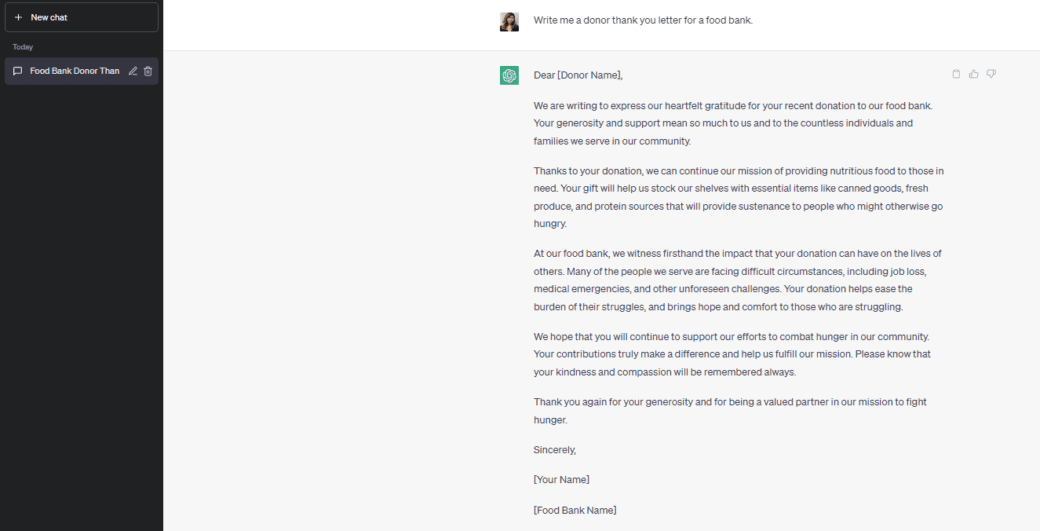
Lately, there’s been a lot of hype around ChatGPT. That’s because unlike standard chatbots, which use pre-programmed responses to answer questions, ChatGPT generates responses in real-time. Unlike the chatbots mentioned above, which focus on external facing customer support, ChatGPT can be used to boost productivity within the workplace.
General Uses for ChatGPT for Nonprofits
Let face it, generating content for fundraising and marketing can be a time suck. This is where ChatGPT comes in. It can generate fundraising emails, social media posts, and blog articles, all on the fly. By inputting additional information about your target audience and donation goals, you can get personalized content tailored to your specific needs. This tool can also generate catchy email subject lines, maximize your peer-to-peer fundraising campaigns, and condense long chunks of content into shorter and more digestible pieces.
Pricing: ChatGPT is currently free to use. However, for $20 a month, you can upgrade to ChatGPT Plus, which gives you priority access during peak hours, faster response times, and access to new features and improvements – including ChatGPT-4.
Note Taking AI Tools
Say goodbye to taking manual notes! AI can take care of that for you. Here are some artificial intelligence note taking options to help you get the most out of your meetings:
1. Otter.ai

Otter.ai is an AI meeting assistant that automatically records audio, transcribes spoken words into text, captures slides, and generates summaries – all in real-time.
Functionality: Otter connects to your Google or Microsoft calendar and can automatically join and record your meetings on Zoom, Microsoft Teams, and Google Meet.
Pricing: Otter offers a basic free plan for individuals just getting started. For additional features, there are three pricing plans available depending on your needs.
2. Fathom
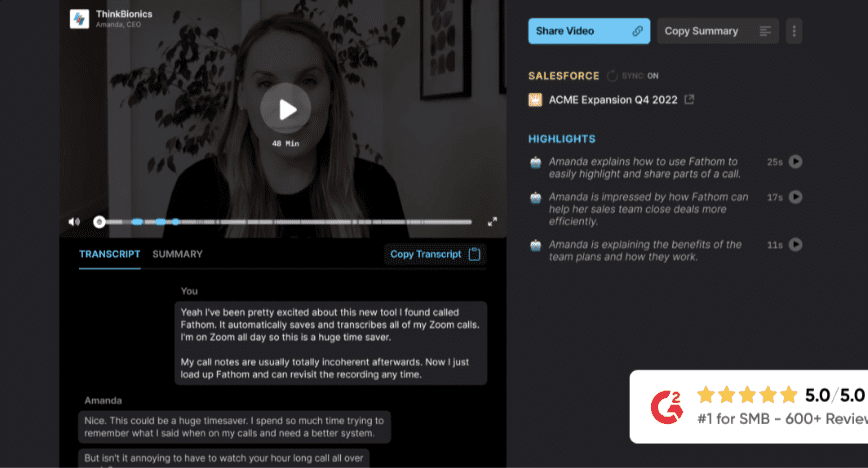
Fathom is another AI-powered meeting minutes tool that automatically records, transcribes, and summarizes important meeting discussions.
Functionality: One of the best things about Fathom is that it works seamlessly alongside Zoom. It can also integrate with other platforms such as Slack, Salesforce, and Hubspot. This means you can easily access all your meeting records from one centralized location and ensure that important action items aren’t overlooked.
Pricing: Currently, Fathom is completely free to use. However, they may begin to charge for new, team-centric functionality in the near future.
Predictive Analytics AI Tools
Have you ever wished you could predict your donors’ giving patterns? Well, with AI, you can now use predictive analytics to analyze donor data and gain insights that can inform your fundraising strategies. Using statistics and modeling techniques, predictive analytics helps predict future outcomes. Here are some AI-powered tools to get you started.
1. Sisense

First up is Sisense, a powerful analytics platform that allows you to gain insights from your data without any coding experience needed.
Functionality: It offers customizable dashboards, automated workflows, and the ability to easily connect to various data sources. What makes Sisense unique is its ability to handle large datasets and provide quick and reliable predictive analytics.
Pricing: While it’s not fully free, Sisense does offer a free trial and flexible pricing options.
2. IBM Watson Analytics
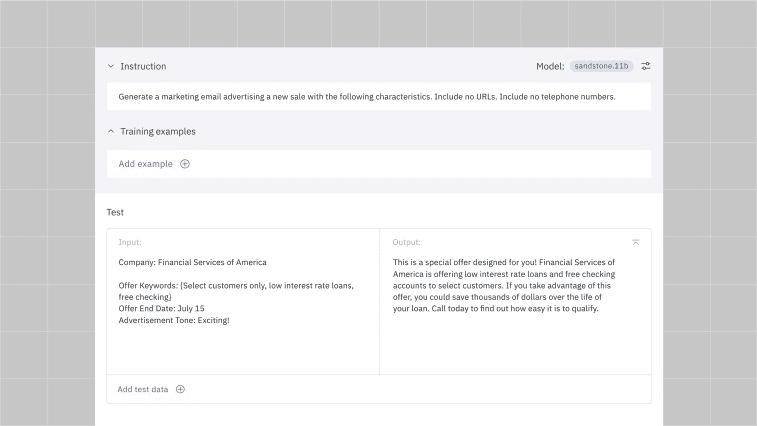
Next up, we have IBM Watson Analytics, a powerful data analytics and visualization tool.
Functionality: It offers features like predictive analytics and can analyze human speech for meaning and syntax, making it easy to use even for those without coding experience.
Pricing: IBM Watson Analytics offers a free trial so you can test it out before fully committing. It’s a great option for those looking for a powerful yet user-friendly data analytics tool.
3. RapidMiner
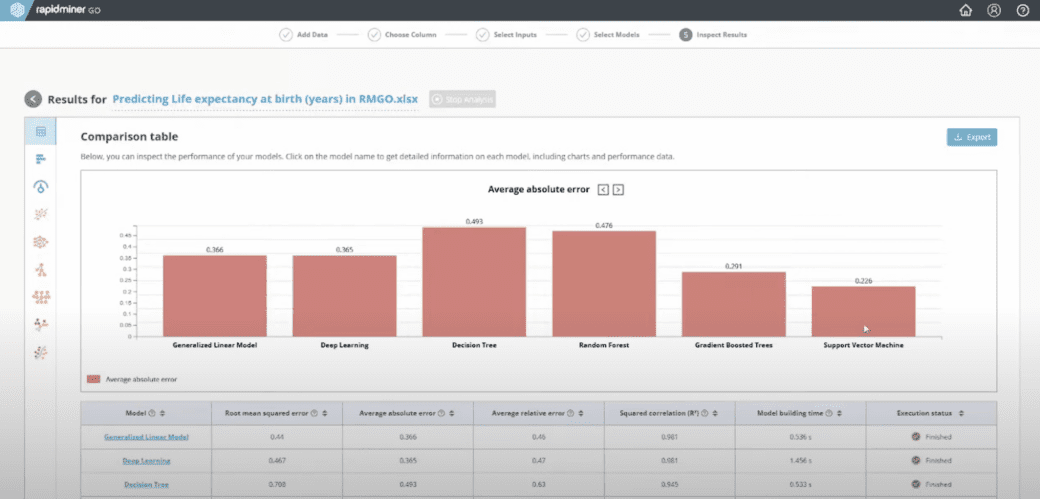
RapidMiner is a user-friendly data science platform that empowers you to leverage predictive analytics without any coding expertise.
Functionality: With its intuitive interface and drag-and-drop functionality, you can quickly and easily analyze donor data and gain valuable insights to inform your fundraising strategies.
Functionality: While RapidMiner offers a free trial, continued use of the platform requires a paid subscription.
Image Recognition
As more and more nonprofits shift towards digitalization, image recognition has become a powerful tool for enhancing your work. With image recognition, you can easily and quickly classify images to gain valuable insights. For instance, this particular type of technology has come to play a crucial role in wildlife conservation. It’s used to identify and monitor endangered species as well as detect potential threats in real time. This technology can be used across nonprofit causes for many different image-related purposes.
Here’s some tools to help you get started:
1. Amazon Rekognition

Amazon Rekognition is a cloud-based image recognition service that uses deep learning technology to analyze and identify objects, scenes, and faces in images and videos.
Functionality: It offers a range of unique features, including real-time analytics, facial recognition, object detection, and integrations with other Amazon Web Services (AWS) products.
Pricing: Amazon Rekognition offers a free tier with limited usage and a pay-as-you-go pricing model that may be more accessible for nonprofits with a limited budget.
2. Clarifai
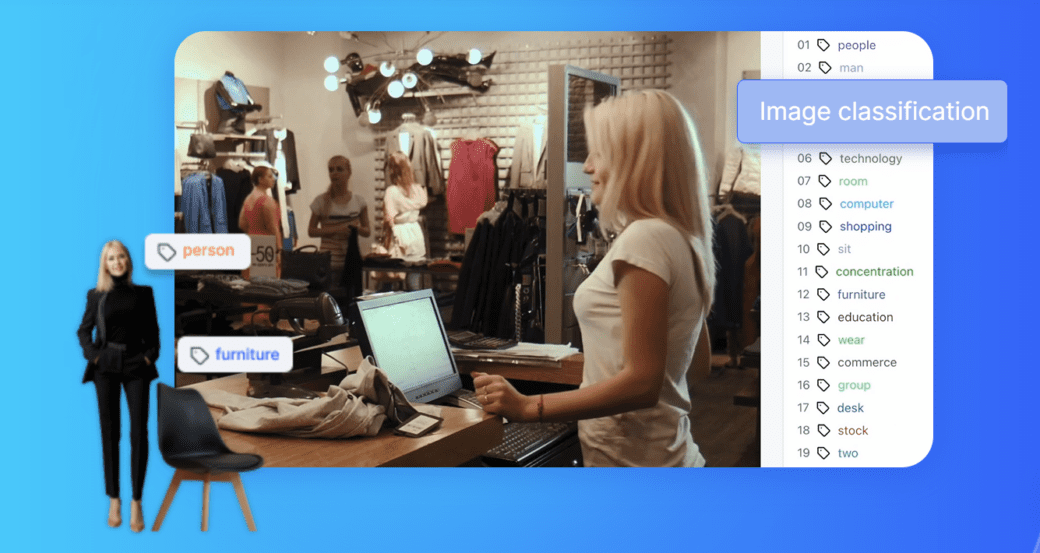
Functionality: With a user-friendly web interface, Clarifai is an AI-powered image and video recognition platform that offers a range of tools for visual recognition, search, and classification. It uses algorithms to analyze images and videos and provide insights based on your content.
Pricing: Clarifai offers a free trial and a range of pricing plans.
Natural Language Processing (NLP)
If you’re looking to up your outreach game, Natural Language Processing (NLP) can be revolutionary. At its core, NLP is a computer program’s ability to understand spoken and written language. This in turn lets it sift through social media posts, online reviews, and other unstructured data. One thing you can do with this kind of technology is get a better handle on how the public perceives your organization. We’ve got some awesome tools to help you get started, so let’s dive in!
1. Google Cloud Natural Language
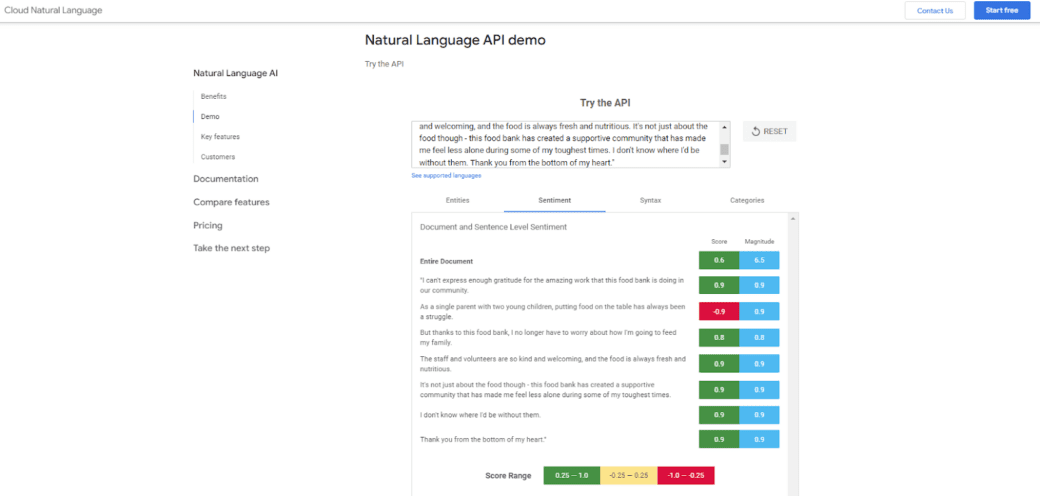
Google Cloud Natural Language is a text analysis tool that allows users to extract insights from unstructured data, such as social media feeds and emails.
Functionality: It can help you understand the emotions expressed in text, recognize places or names mentioned, and sort the text into different categories. One cool thing about it is that it can even determine the relatioships between different things mentioned in the text.
Pricing: You can get started for free but continued use of the tool requires a paid subscription.
2. Amazon Comprehend
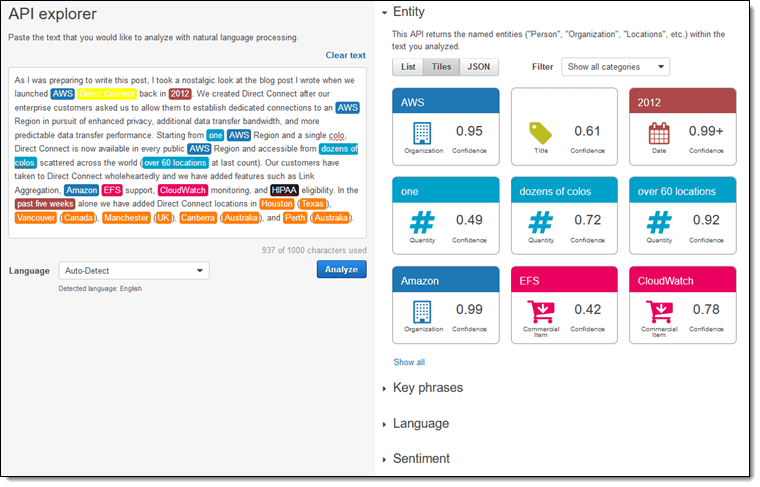
Amazon Comprehend is a natural language processing service from AWS that offers advanced text analysis and insights.
Functionality: It can identify and extract key phrases, sentiment, and topics from text, helping nonprofits gain a better understanding of their supporters’ needs and concerns. It also has the ability to support multiple languages.
Pricing: Similar to other AWS products, Amazon Comprehend is not free. However, there are a range of pricing plans offered.
These are just a few examples of the AI tools available for nonprofits to use. While most of these tools require a subscription, some offer free trials or free versions with limited features. As a nonprofit, you may be eligible for discounts or special pricing from some vendors. As always, it’s important to research and compare pricing options before committing to a particular AI tool.
Challenges and Ethical Considerations Associated with AI Implementation in Nonprofits
AI has a ton of potential to revolutionize the way nonprofits operate. However, it also presents several challenges and ethical considerations that must be taken into account. Here’s a few things to be aware of:
- Potential biases – AI algorithms are only as good as the data that is used to train them. If the data used to train an AI algorithm contains biases, the resulting output can reflect these biases. This can lead to unintended consequences, such as perpetuating existing inequalities or discriminating against certain groups. To avoid this, nonprofits need to be mindful about the data used to train AI algorithms and whether it’s representative and unbiased.
- Privacy concerns – AI technology often requires access to large amounts of data to work well, but this raises concerns around privacy and data security. Nonprofits must be upfront and transparent about the data they collect and how it is used, and take steps to protect sensitive information.
- Unintended consequences – We don’t know what we don’t know. AI is complex and can have unintended consequences. For example, an AI algorithm designed to optimize fundraising campaigns may inadvertently encourage donors to give for the wrong reasons or in a way that does not align with your nonprofit’s values. Be sure to think carefully about the potential risks and take steps to minimize them.
Best Practices and Resources When Implementing Artificial Intelligence for Nonprofits
If your nonprofit is considering implementing artificial intelligence, it can feel overwhelming at first. But don’t worry, there are several best practices and resources you can lean on to make the process smooth and successful. Here’s some tips to keep in mind:
Selecting the Right Technology
There’s no shortage of options out there, each with its own pros and cons. Take time to research and compare your options, and pick a technology that aligns with your organization’s goals and values. (This is biased, but we think this list is an excellent start!)
Building a diverse and inclusive team
It’s important to have a team with different backgrounds and perspectives to identify and mitigate potential biases in AI algorithms, and ensure that the technology is serving the needs of all stakeholders.
Ensuring transparency and accountability
Be transparent about how you collect data and use it. Establish clear accountability structures to address any unintended consequences.
Resources
There are several resources available to nonprofits looking to implement artificial intelligence technology. For example, the AI Ethics Lab offers a range of resources, to help nonprofits navigate the ethical considerations of AI implementation. Additionally, the AI for Good Foundation provides support and resources to nonprofits looking to use AI for social impact.
Using Artificial Intelligence for Nonprofits to Empower Positive Change
So, while AI is super useful, like anything else, it comes with its own set of challenges and ethical concerns.
But hey, it’s not all doom and gloom! You can totally make AI work for you by following these simple tips and tricks.
As AI technology continues to evolve, it is important to stay informed about the latest trends and developments in the field.
To get more articles like this + tips for nonprofit professionals in your inbox every week, sign up for our weekly nonprofit educational newsletter.
Editor's Picks
Ultimate Guide To Peer-to-Peer Fundraising
Customer Story: Spur Local Raises Over $1M With Their Give Local Campaign
Fundraising Strategies for Nonprofits: Craft the Best Approach for Your Organization
Create a Killer Fundraising Plan - Best Practices, Strategies, & Downloadable Template



